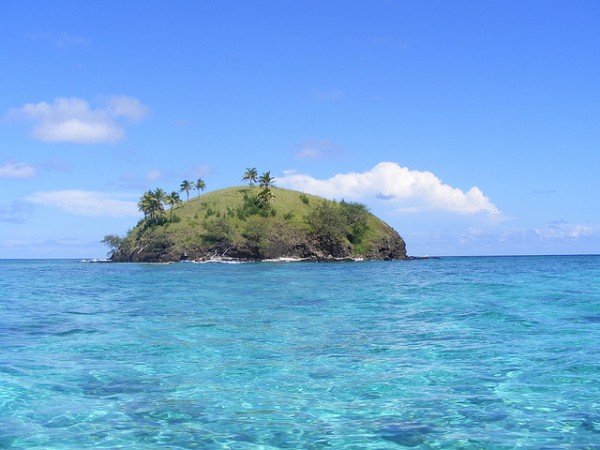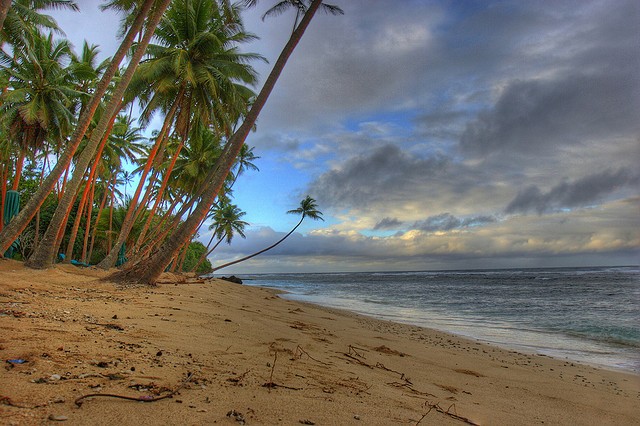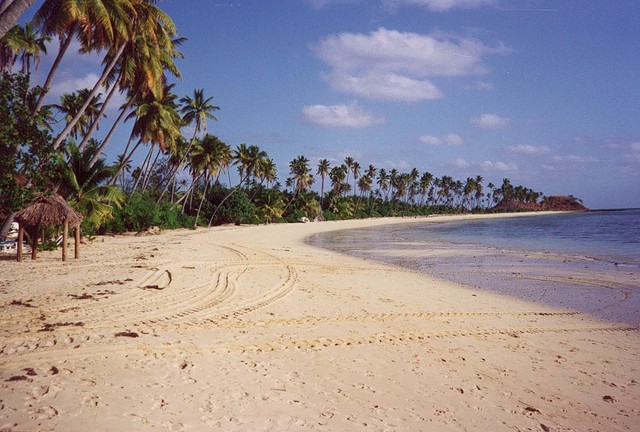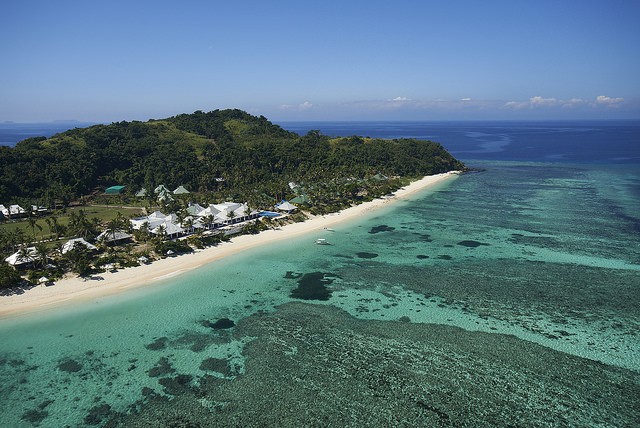 the Travel Enthusiast
the Travel Enthusiast
- 20 May
Adam in Amazing Places | NO COMMENTSThe Dynamic Fiji
Fiji is an island nation that lies on the Pacific. It is part of Melanesia.
It neighbors with other sovereign islands like Vanuatu, Tonga, New Caledonia, Kermadec Islands, Tuvalu, Wallis and Furtuna and the Samoas.
The capital of Fiji is Suva. the currency is Fijian dollar. The total area of the country is 18,333 sq km and the coastline is 1,130 km.
The national and official languages are English and Fijian and both are widely spoken. The political status of the country is republic.
Fiji is a very popular tourist destination. Tourism always played a very important role for the country. It’s famous for its crystal clear water, white sandy beautiful beaches, mountains coral reefs and other natural wonders as well as the culture and traditions. The main tourist attractions are:
- Levuka Historical Town is the most preserved colonial town in Fiji. It was the first colonial capital of British Fiji when it was ceded to the empire in 1874. It is recognized by UNESCO as a heritage site.
- Mamanuca Island is famous for both of its natural beauty and leisure activities such as swimming, surfing and snorkeling. It has many good resorts and has islands and villages.
- Navua River The 65 km long river is renowned for its scenic beauty filled with breathtaking surroundings like mountains and tropical forests
- Nananu-i-Ra. It is one of Fiji’s top tourist attractions. Kite surfing and windsurfing is very popular in the region because of being blown by trade winds. The beaches are also exceptional
- Mount Tomanivi is the highest mountain in Fiji. The peak is 1,324.
The infrastructure and transportation of the country is decent, 50% of the roads being paved and in good shape. However the network faces troubles such as flooding and hurricanes. Suva, Lautoka, Levuka, Savusavu have ports. Ferries usually operates between the islands.
The international airport of Fiji is called Nadi International. It is a developed airport and connects countries like Australia, New Zealand, South Korea and the rest of the Pacific islands
The economy of Fiji is one of the wealthiest on the Pacific but nevertheless still faces issues with subsistence sector. It is rich in fish, minerals, timber, gold and copper and oil. The country is highly agricultural, exporting mainly sugar cane and different kinds of fruits and vegetables.
Despite its vast natural resources, Tourism flourished the country’s economy the most.
The topography of the island is impressive and beautiful. While much of the island was formed by volcanoes, the big islands are filled with mountainous areas filled with forests and coastal plains. The beaches consist with numerous palm trees, especially coconut palm trees.

An uninhabitated island in Fiji. Scenic places like these are quintessential ©Chris Isherwood/flickr
Fiji features smaller islands and each island have its own coral reef system. There are totally five rivers and these rivers are:
- Sigatoka (120 Km)
- Rewa (145 Km)
- Dreketi (65 Km)
- Vanua Levu (180 Km)
The climate is tropical and oceanic, the average temperature is between 20 to 30 Celsius degrees. Humidity is very high and the rainy season is between November to March. South-East winds are usual. The most significant environmental problems are soil erosion and deforestation.
The vegetation is totally composed by vast forests throughout Fiji with different kind of trees. Coastal mangrove swamps and grasslands are also in the country, particularly on the eastern part.
The Wildlife of Fiji is opulent. It is the home to six species of bats( four of them are fruit bats) and the Polynesian rat as well as more than 100 of bird, lizard and snake species. Different kind of turtles, prawns and sharks live in the ocean.
The population of the country is 875.000 and more than 50% of them live in urban areas. The life expectancy of the country is 70 years.
About more than 50% of the population is of ethnic Fijians and the rest of them are Indians. There is also a little population of Europeans as well as other Polynesian descents.
- Flights
- Hotels
- Packages
- Cars
- Cruises
travel search by Travelgrove (get this widget)The religion of the country is diverse. 65% of them are Christians, 28% are Hindus, and 6% percent of them are Muslims.
The health care system is good and comprehensive. More than 25 hospitals are widespread in the country and all of them are well equipped with modern technology and fine specialists.
The country does not suffer in major diseases such as Malaria. Infant mortality rate is much lower compared to the 1960’s when it was 60 per 1.000 births. Today it is 19 per 1.000 live births.
Immigration and custom in the country is one of the most severe in the world despite being a popular tourist destination. Almost every foreign civilians require Visas to enter the country. Imports that are not allowed are some fresh foods.
The Traffic within the country is easy because of its size. Fiji, being a former British colony and still a member of the Commonwealth drives on the left side. There is a regular taxi and bus services throughout the island. Periodic Ferries services are common between the islands.
The Brief History of Fiji.
The Melanesian people ruled the island for more about 4.000 years, influencing the islands culture and tradition even nowadays. The first European who explored the island was Abel Tasman in 1643 and later on British explorers like James Cook and William Bligh also visited Fiji around the 18th century. During the era of James Cook, the island was already mixed with Polynesian and Melanesian society.
Throughout the 18th and 19th century, there were conflicts between the Europeans and the Fijians. Each European established cotton and sugar plantations but was constantly raided by the islands natives.
By 1874, the British increased its interest on the island and were eager to conquer it. Seeing that the other powers were reluctant to stay on the island and that gave them the upper hand. Cakobau, then leader of the island signed an agreement with the British Empire and Fiji officially became a crown colony of the empire.
The British era of Fiji served well for the natives. The economy increased steadily thanks to its sugar industry. Non Fijians(except the British) were not allowed to buy and own lands. The political structures also prospered. Because of the great sugar industry, many Indian labor workers were brought.
In the 1920’s the Indian labor work augmented even more the economy and started to call for more political and commercial influences. By the 1940’s the majority of the population was Indian despite the restrictions of land ownership.
Like the vast majority of the colonies during the 1960’s, Fiji also progressed towards slowly to independence. They gained more and more rights throughout the 60’s and finally achieved total independence from the United Kingdom in 1970.
You might also like



